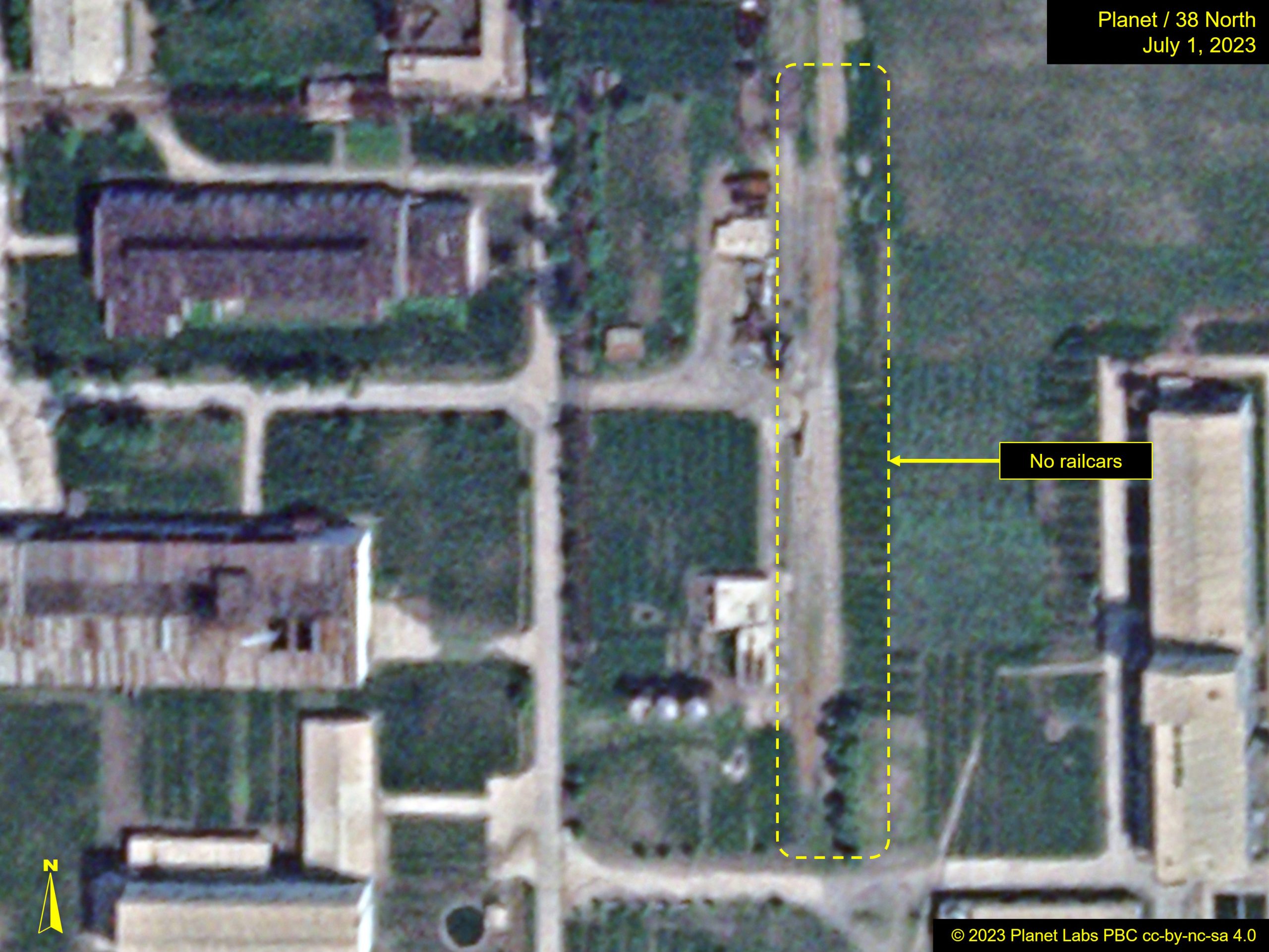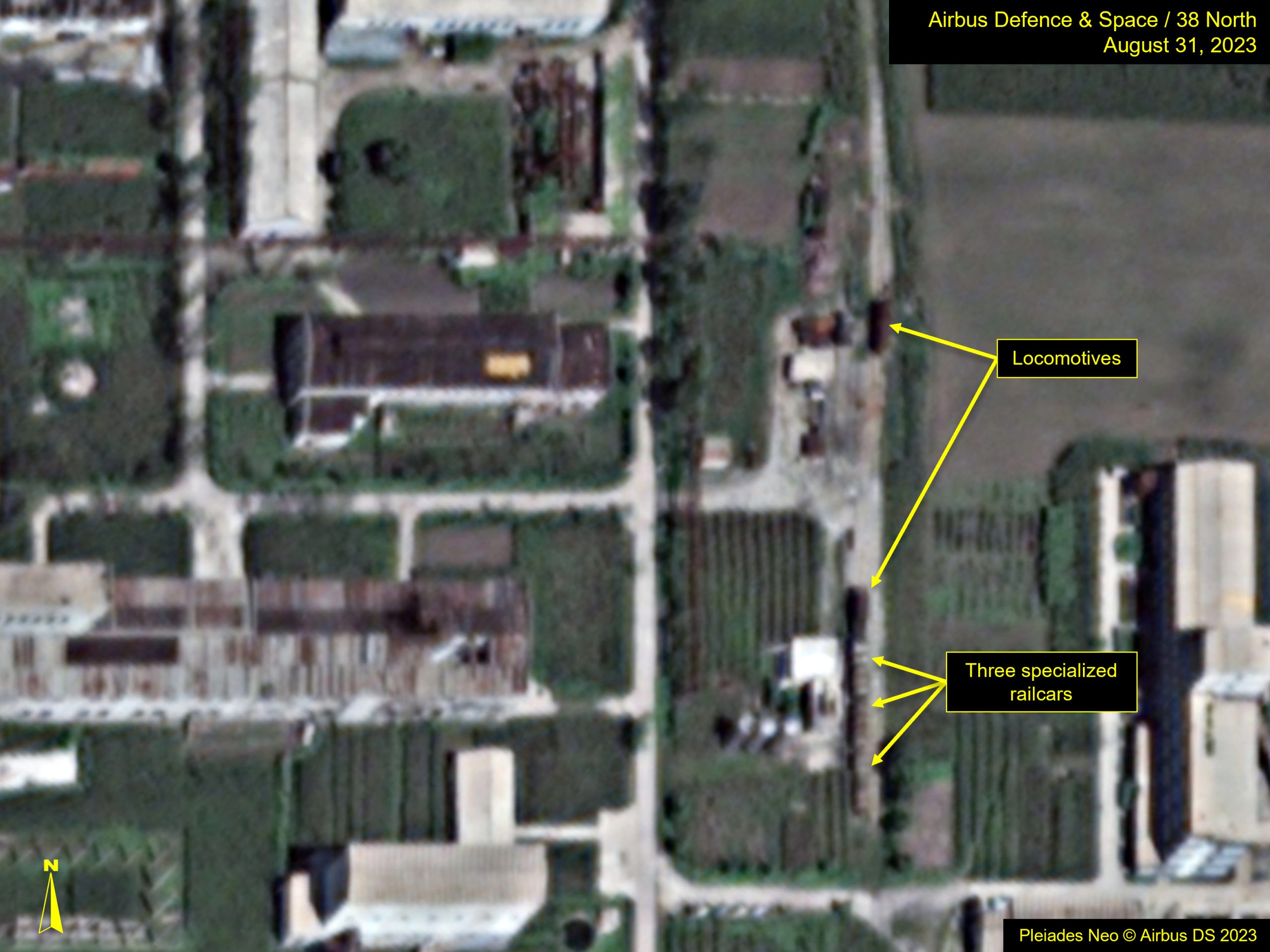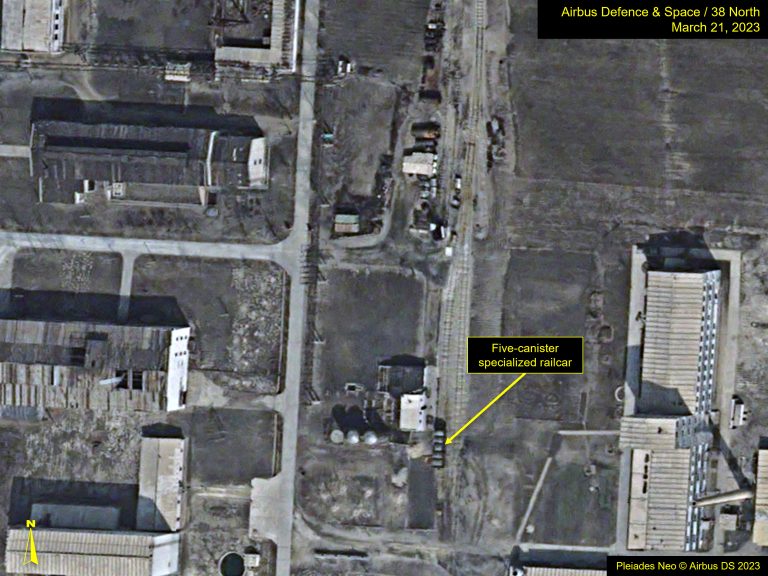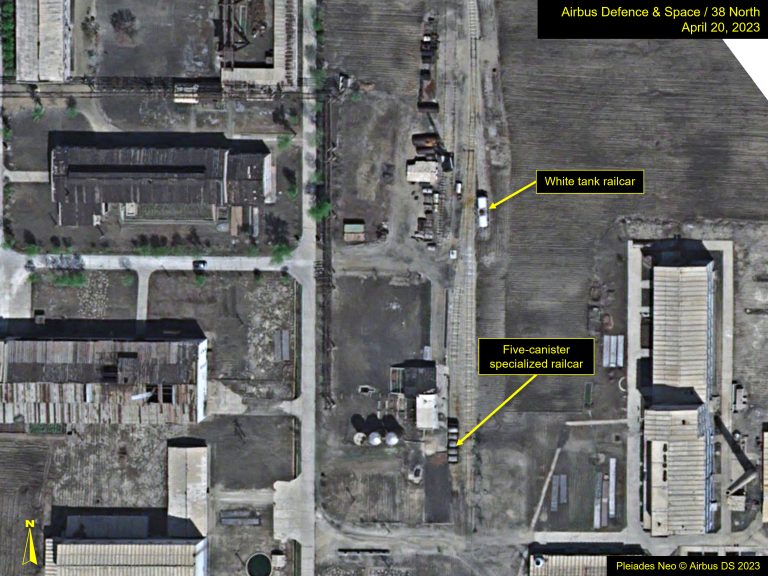Yongbyon Nuclear Scientific Research Center: An Overview of Changes at the Uranium Enrichment and Conversion Facilities
Commercial satellite imagery of the Yongbyon Nuclear Scientific Research Center from February to September 2023 indicates substantial activity has taken place to renovate the site’s uranium conversion facilities and build new buildings around this area. It is unclear what function the majority of new buildings will serve, but the activity is consistent with broader efforts to modernize and upgrade the country’s fissile material production capacity to support the expansion of its nuclear weapons programs.
The Uranium Enrichment Plant (UEP) and Conversion Complex
In 2021 and 2022, work on the centrifuge hall drew considerable attention, including the replacement of the cooling units and the addition of an attached 21 by 51-meter single-story addition on the north side. The purpose of this addition is still unclear.
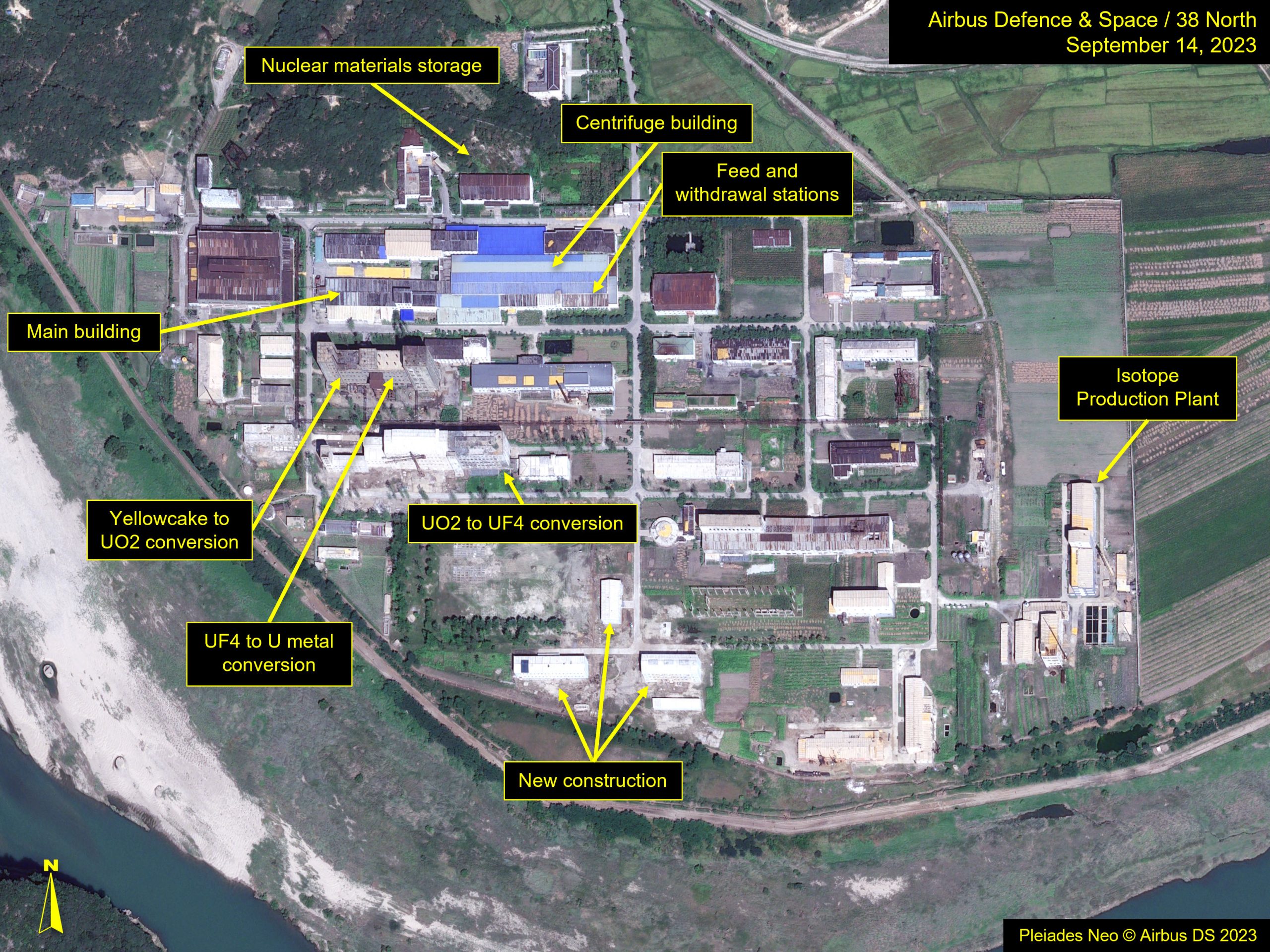
Uranium Conversion Area
South of the UEP is a series of buildings associated with the uranium conversion process. Prior inspections revealed these buildings to have facilitated the uranium conversion processes related to fuel fabrication and enrichment.
Construction activity in the conversion area began in mid-2022 when foundations were laid for a new support building on the west side of a complex. Between July and October 18 that year, the roof covering the west building of the UO2 to UF4 conversion complex (a series of three connected buildings) had been removed, and renovations began.
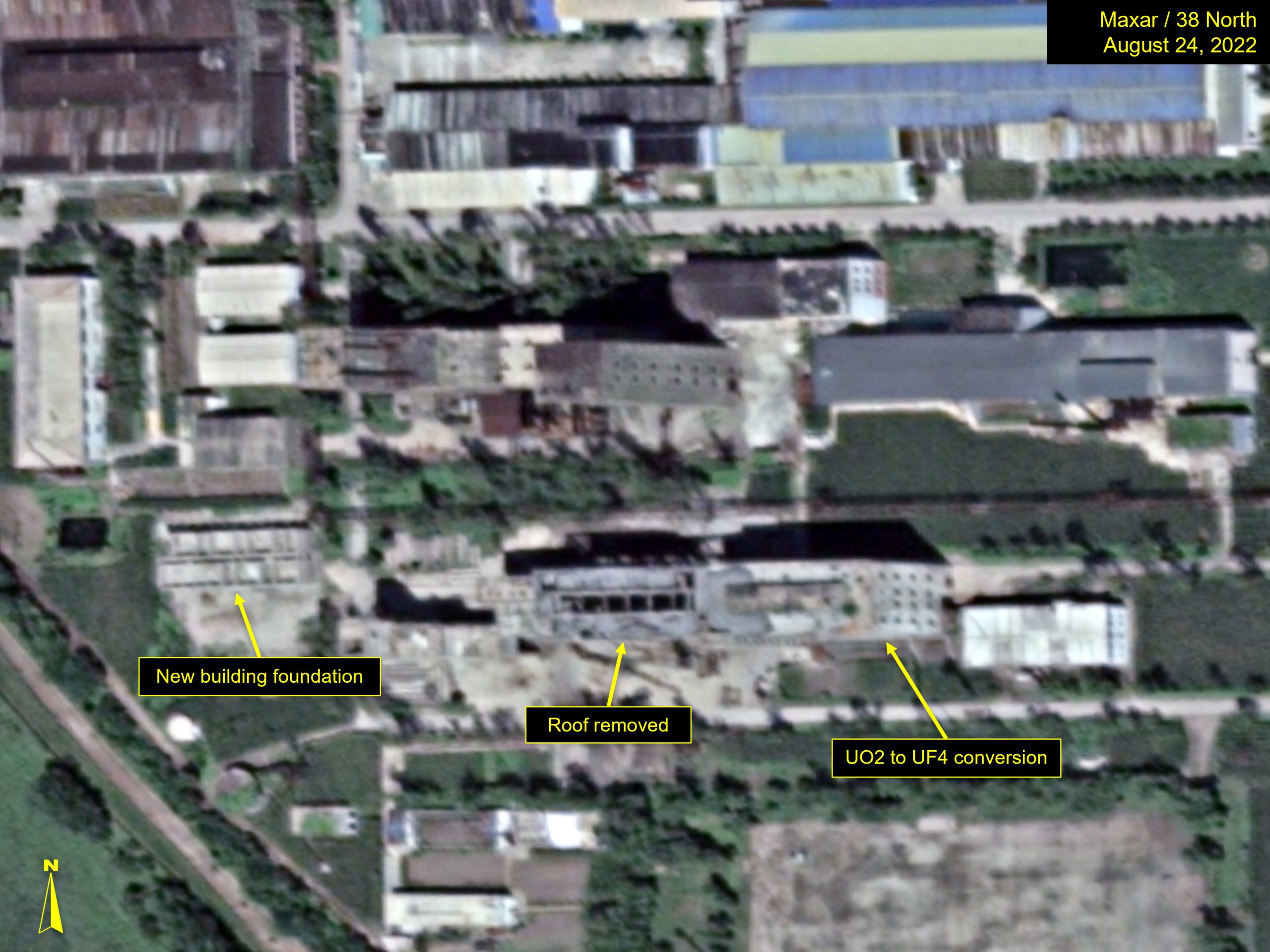
In February 2023, interior and exterior walls were erected on a medium-sized shop building on the west end of the complex, and a new roof was installed on the west building of the UO2 to UF4 conversion complex. A tower cantilever crane was situated on the south side of the building, and one panel in the roof was missing, allowing for the removal or placement of component equipment into or out of the building’s interior.
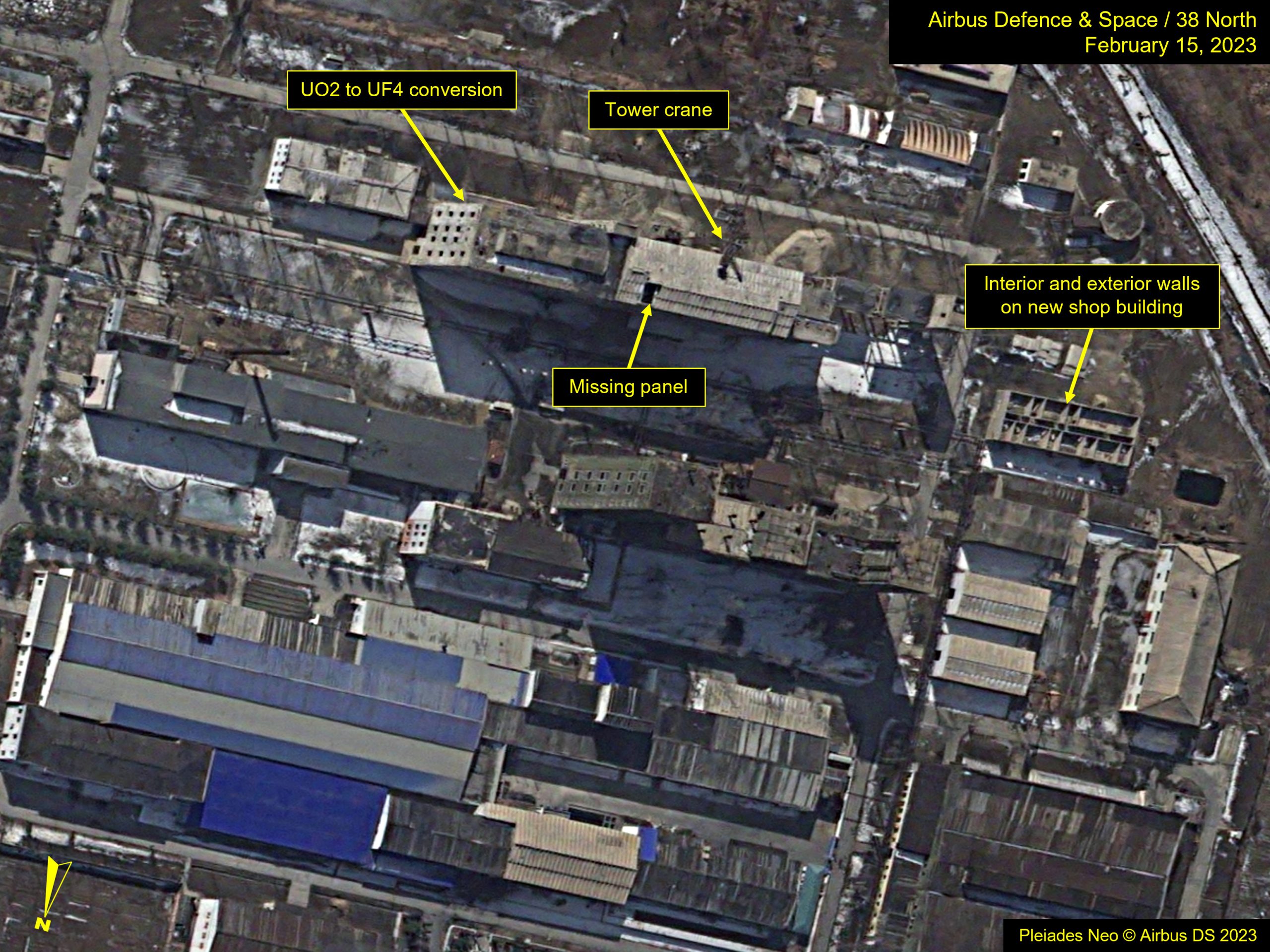
By March 6, a new roof had been installed on the new shop building, signaling the building’s exterior was complete. By March 21, long, pipe-like structures were observed on the ground, placed side-by-side, across the road south of the conversion building. It is unclear whether they were removed from or were waiting to be placed inside the UO2 to UF4 conversion building as part of the renovations, or if they were to be used elsewhere. Given the caustic chemicals used in the conversion process, replacement of older components is a likely scenario.
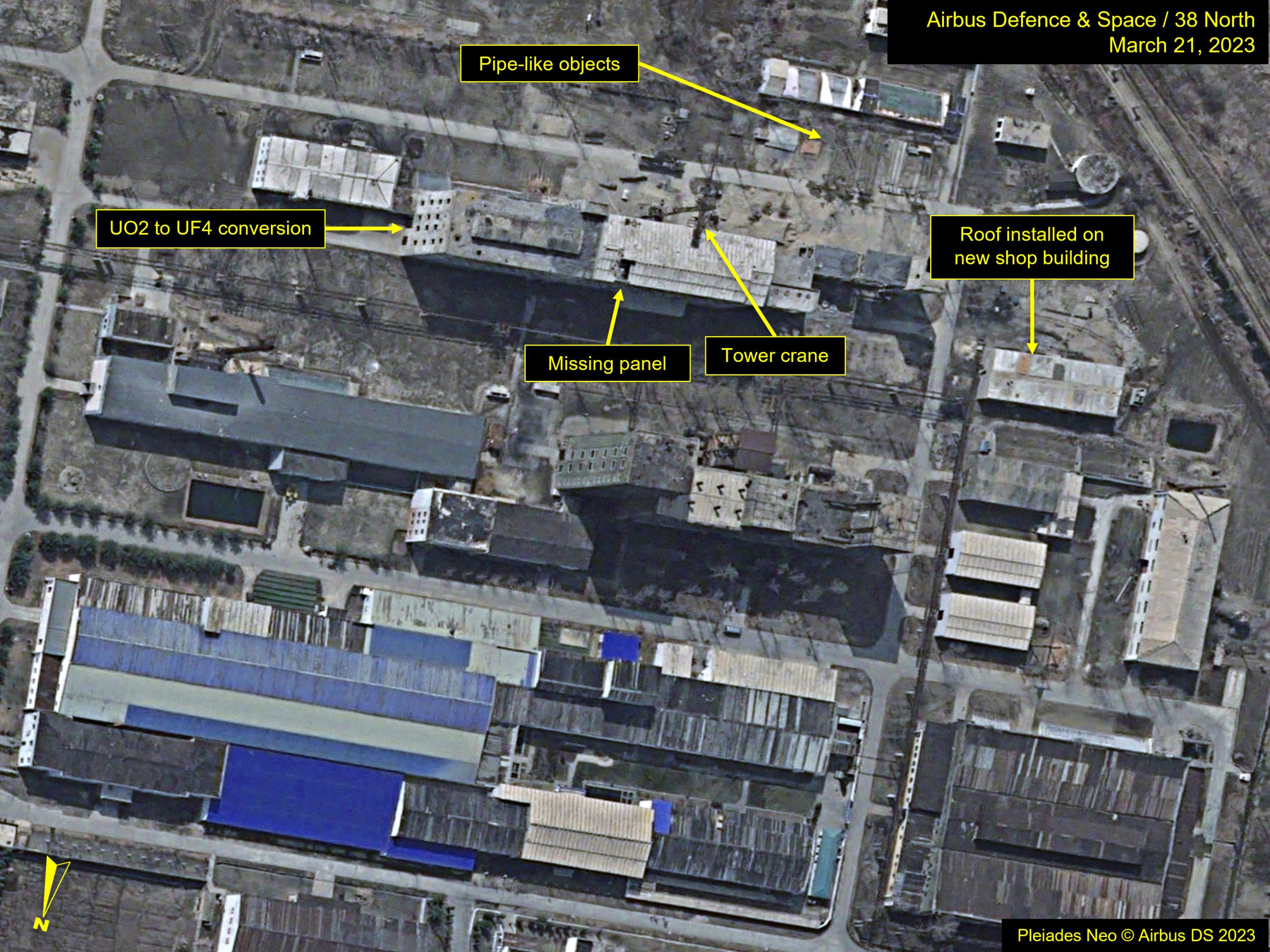
On April 20, the pipe-like objects remained, but new activity was observed on the south side of the uranium concentrate (“yellowcake”) to UO2 and the UF4 to uranium (U) metal adjoining conversion buildings, with small canisters scattered about. The purpose of these canisters is unclear. Whether they were empty yellowcake containers or components to an interior apparatus, their scattered pattern suggest they were to be discarded.
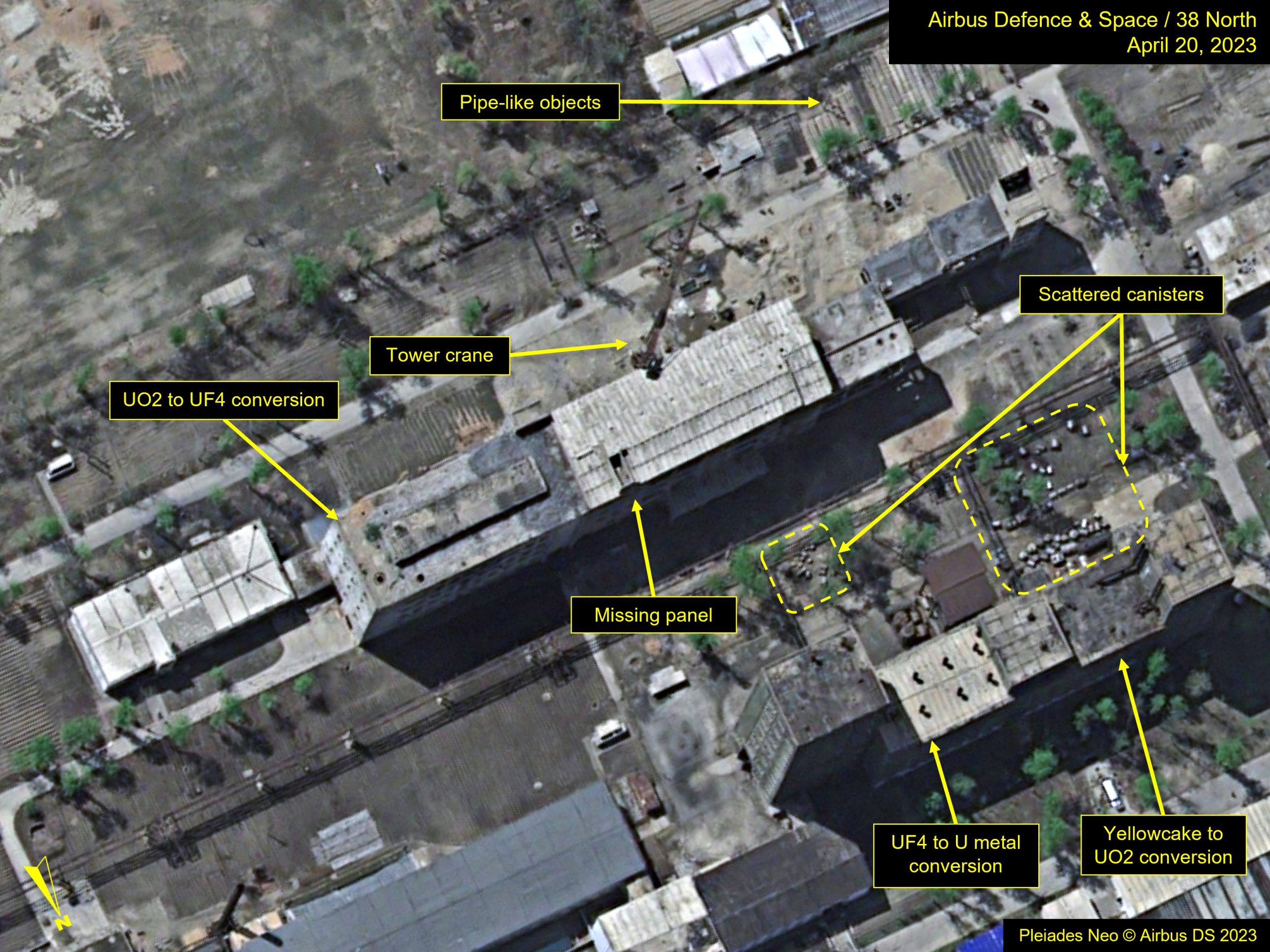
By July 1, the tower crane remained next to the UO2 to UF4 conversion building, but the pipe-like objects that had been observed across the road were no longer present.
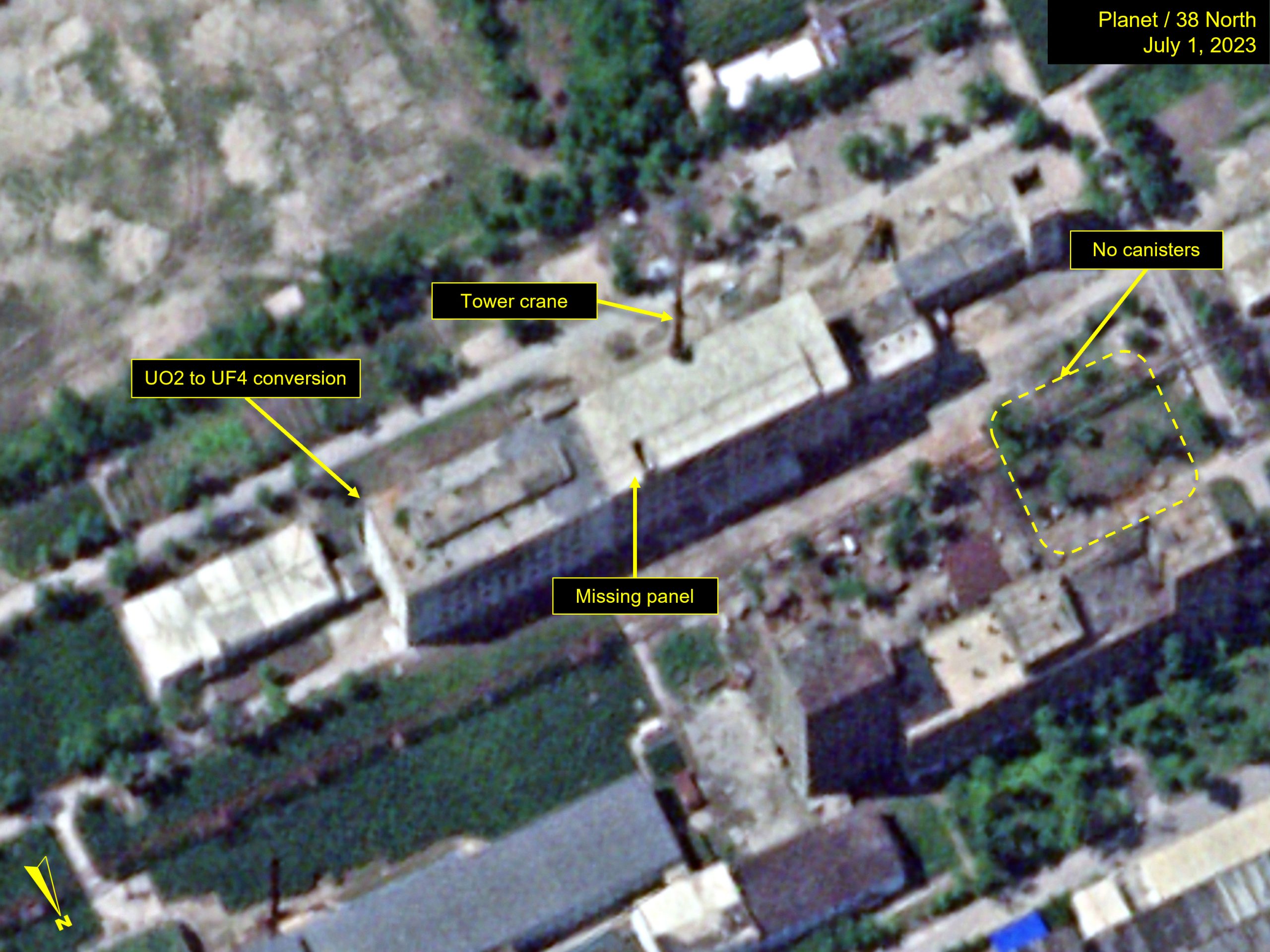
By September 6, only a handful of canisters remained in the adjacent yard.
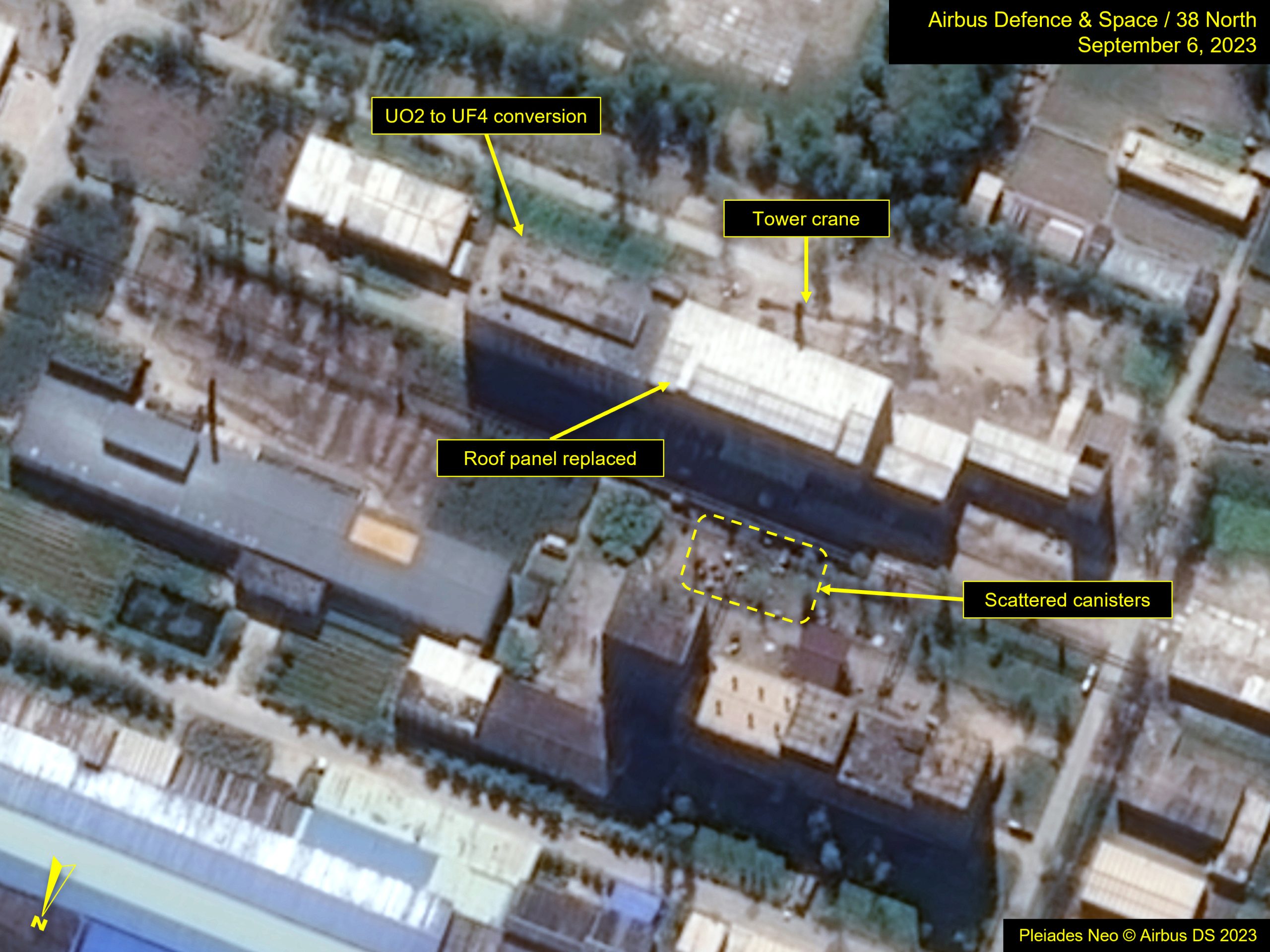
On September 14, the missing roof panel had been installed on the UO2 to UF4 conversion building, suggesting the renovations here were finished. However, the tower crane remained in place, raising questions about whether work would commence on the south building.
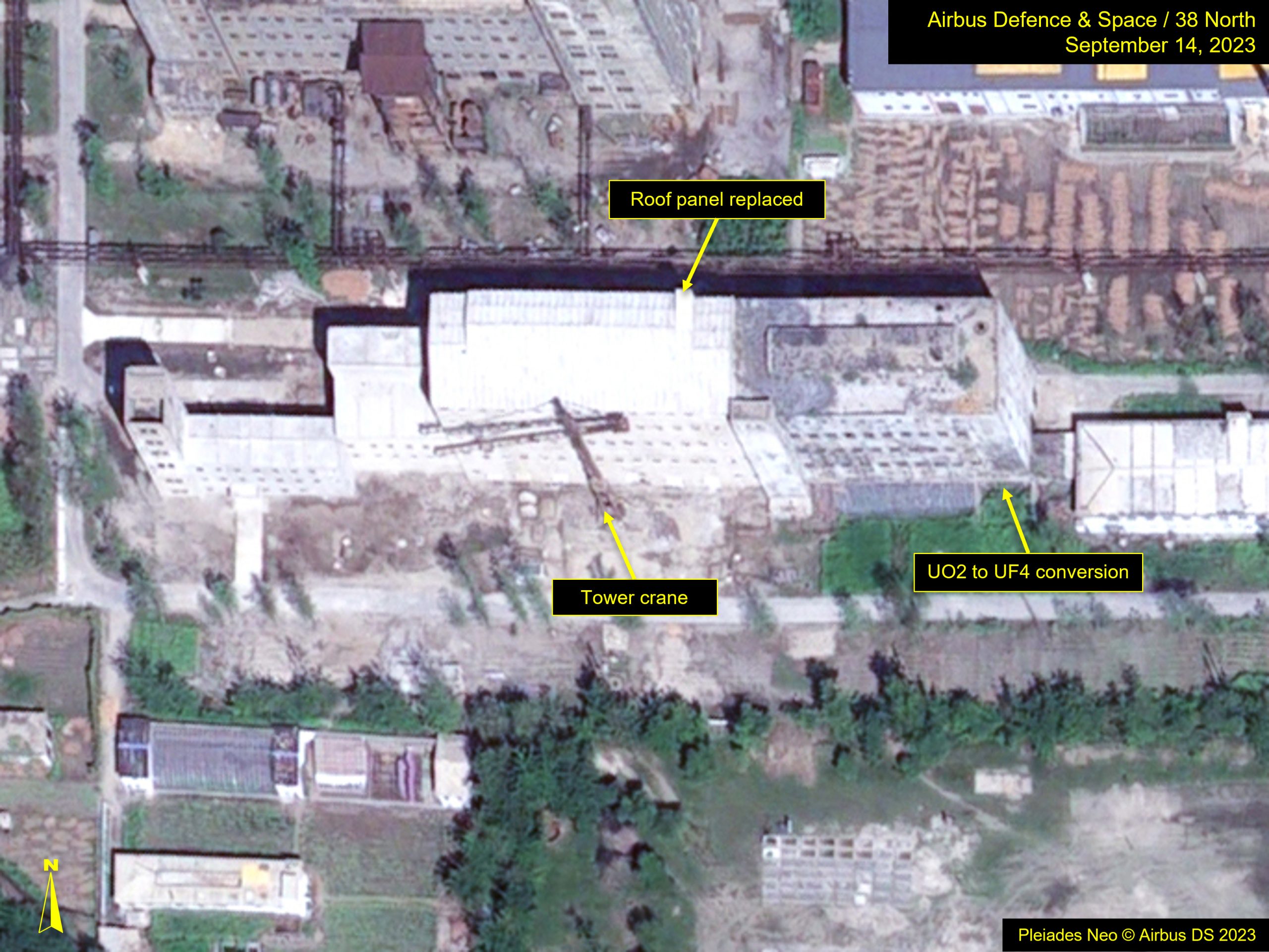
New Construction
Alongside renovations to the conversion facilities, new construction was taking place in the south-central area of the complex. On March 6, 2023, footers for three large new buildings were being prepared. Trenching was also observed in that vicinity, although its purpose was unclear.
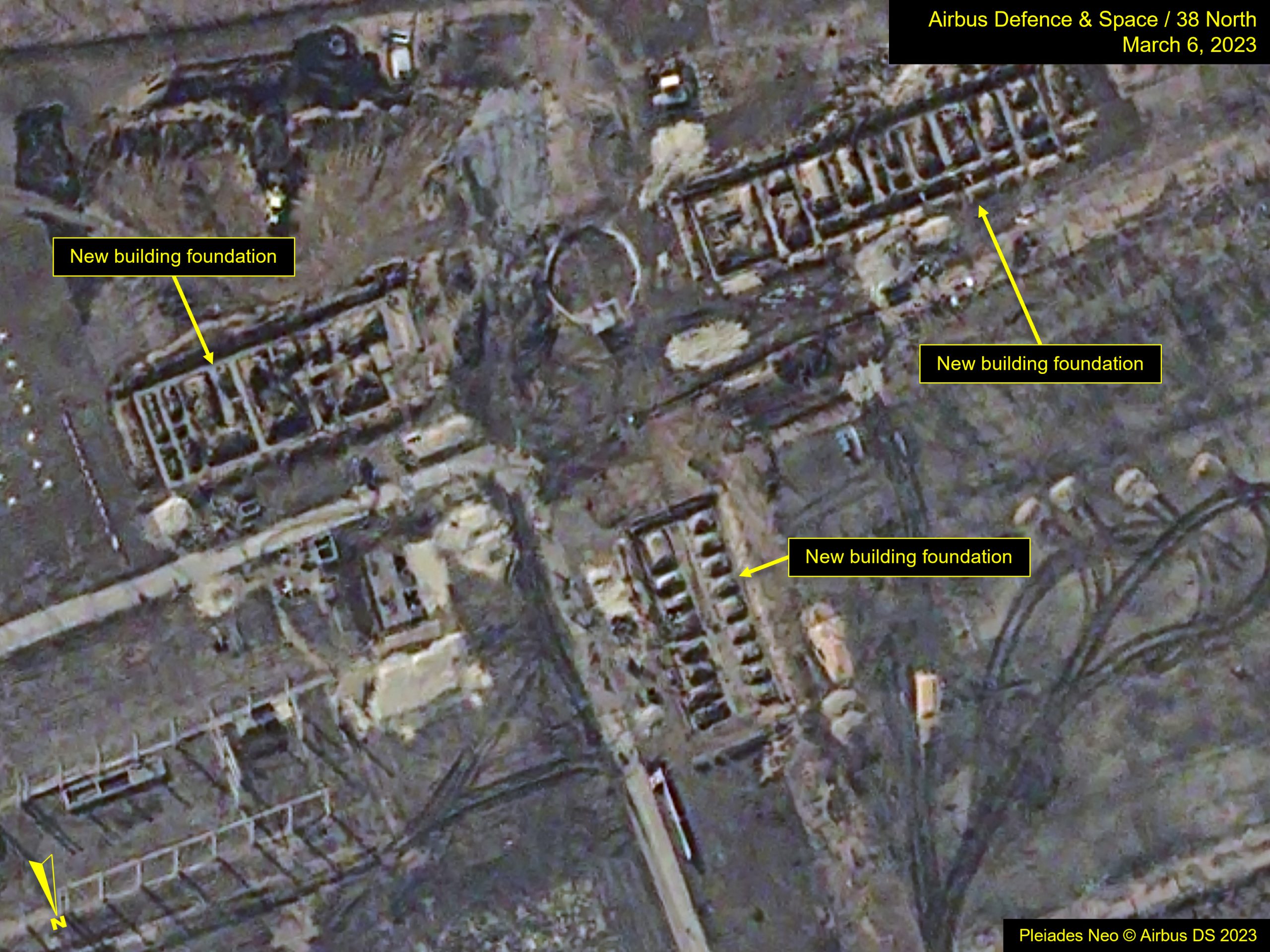
By March 17, walls were erected on the three news buildings, with the first floor of the east building installed. Linear, parallel lines with the appearance of furrows flanked the west and south sides of the east building, and additional rows were observed in an adjacent, large, cleared area to the northwest. Imagery with better resolution from March 21, revealed that what had appeared as plowed furrows, were long pipe-like objects, partially excavated. Their purpose is unknown, but it appears they had been buried at these locations and may represent waste storage.
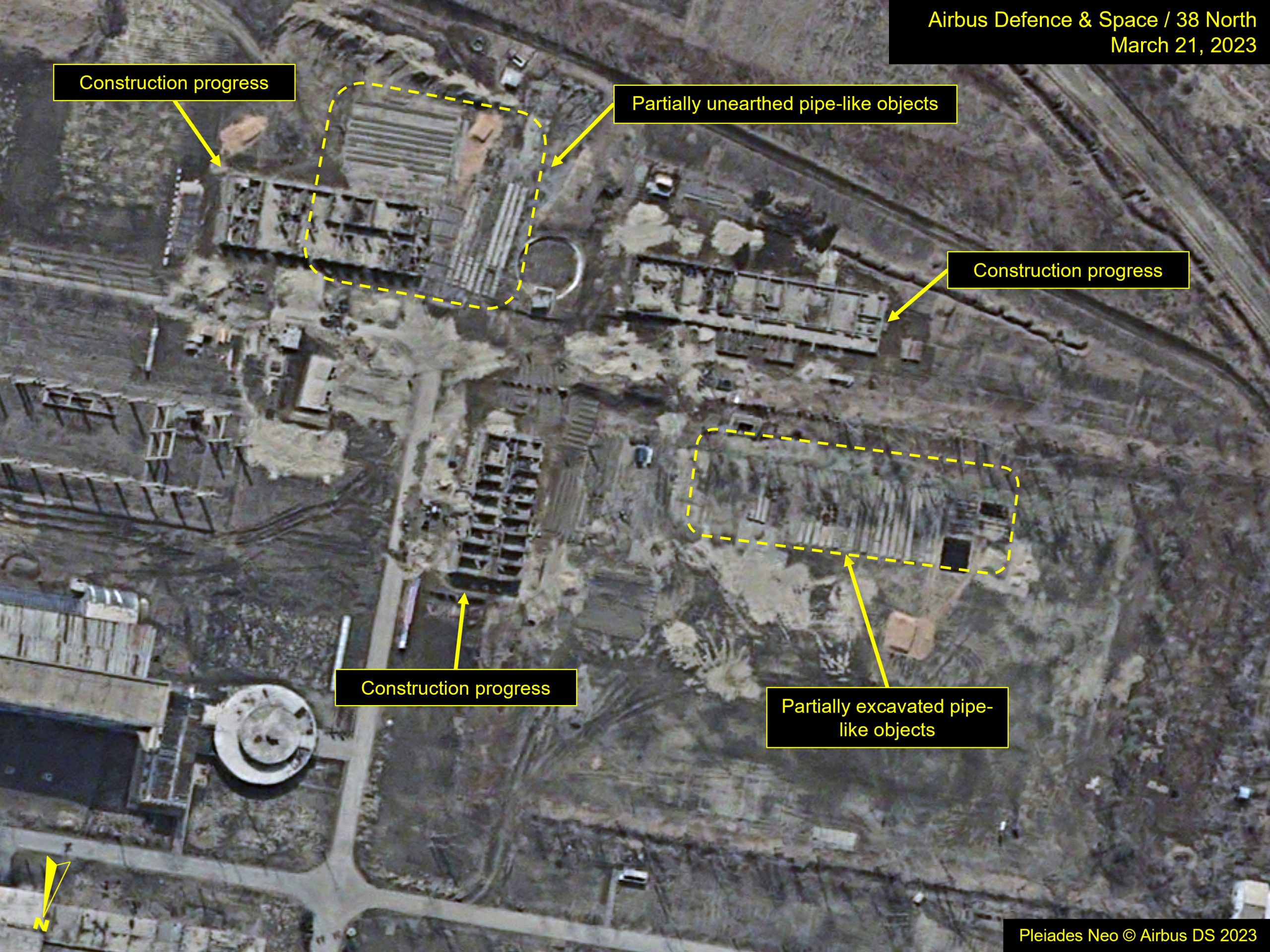
By April 20, the first floors had been installed on two of the three new buildings. Their floor patterns, like that of the new shop building, revealed much about their interiors and possible functions: the smaller rooms, likely offices, and the larger, likely shops or laboratories. In addition, the previously reported pipe-like objects were mostly earth-covered, although new rectangularly-shaped excavations appeared around the north building (perpendicular to the others) and in the adjacent field to the west. These may be associated with the burial of waste materials, although those flanking the building may be building materials.
In an area north of the three new buildings, a long, rectangular building was also under renovation. The western part of the roof had been removed, leaving its interior exposed. Inside, piping appears to run the length of the building with small, circular openings along its center line. While the building’s function cannot be confirmed, the exposed area suggests a chemical containment role.
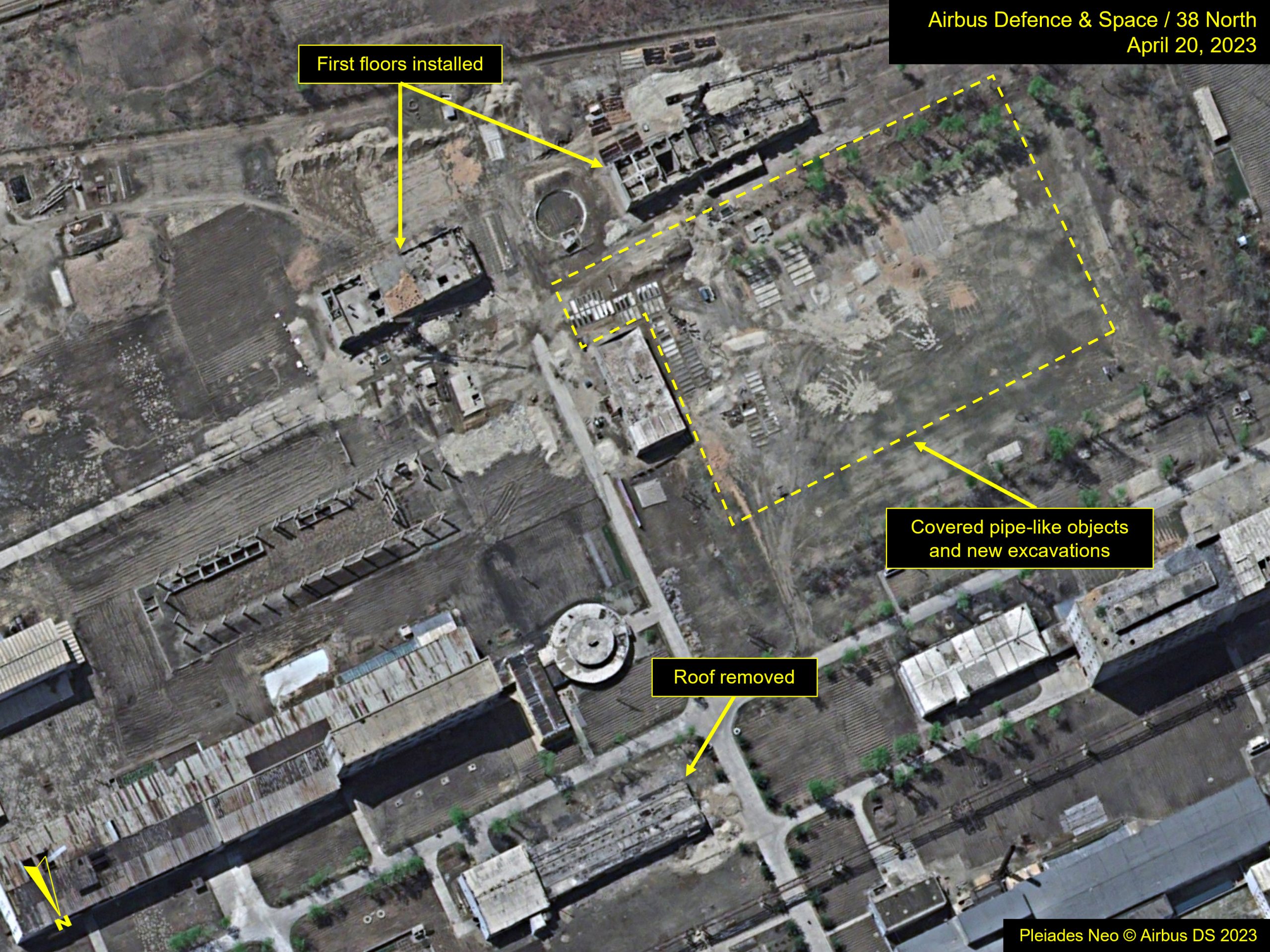
By July 1, exterior work on the three-building complex had been completed, and the roofs had been installed. A new long vehicle shed had been erected to the south of the east building, and the previously reported rectangular excavations had been covered over.
In the adjacent open field, new rectangular earth scarring was observed in the western portion of the field, suggesting it had likely served as a burial ground for contaminated waste.
Additionally, roof repairs on the rectangular building appeared complete.
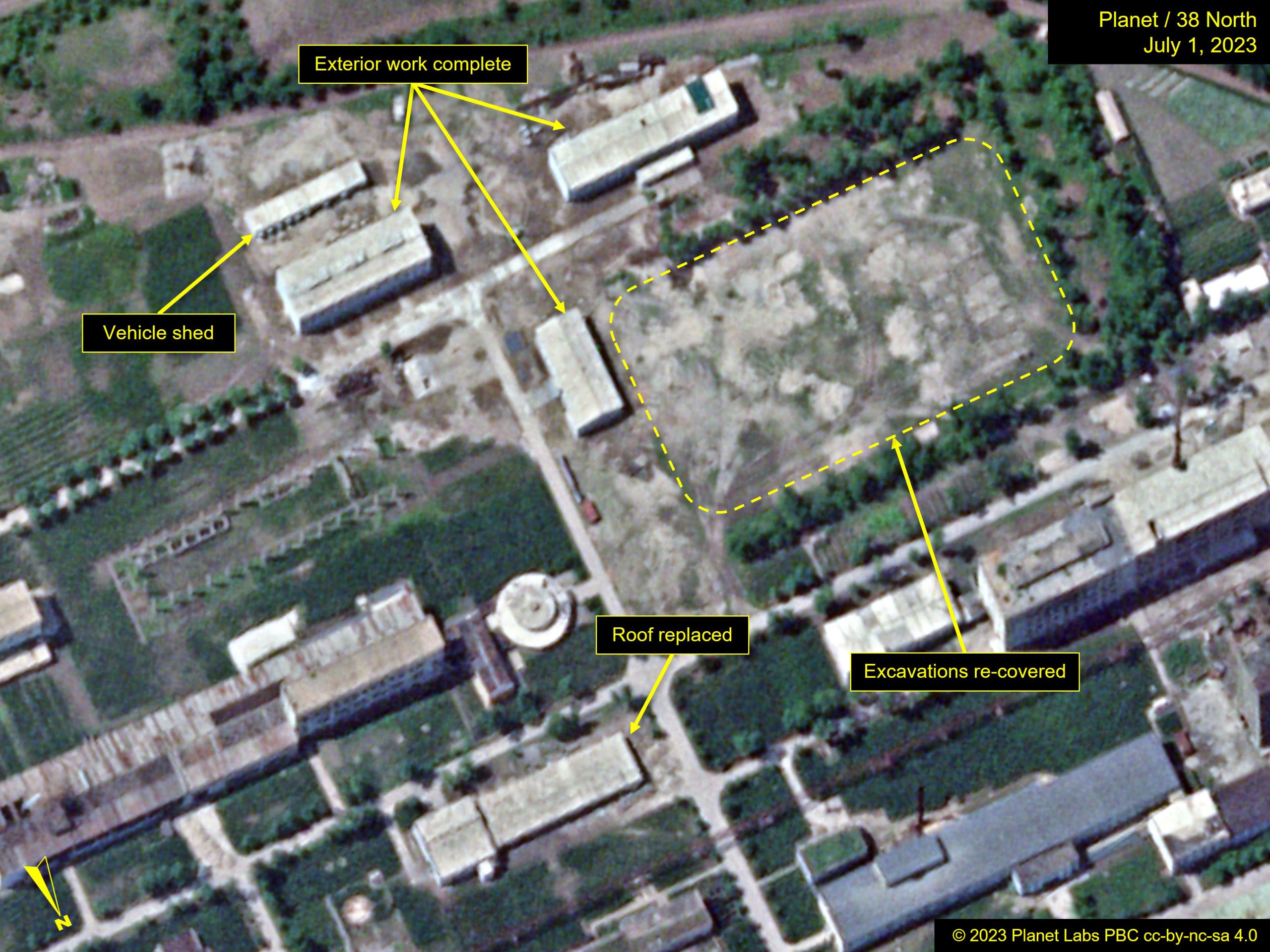
Imagery from September 6 and 14 reveal the smoothing of soil in the large field, although the rows of rectangular scars remain. The excavations are similar to those found in a known underground storage site located within the Yongbyon complex northeast of the UEP complex (at 39° 47’ 15”N, 125°°45’ 24”E). That site—a much smaller area of 50 by 14 meters—was being unearthed earlier in 2023 on March 17. This site holds two large underground liquid storage tanks and a smaller area containing rectangular tombs.
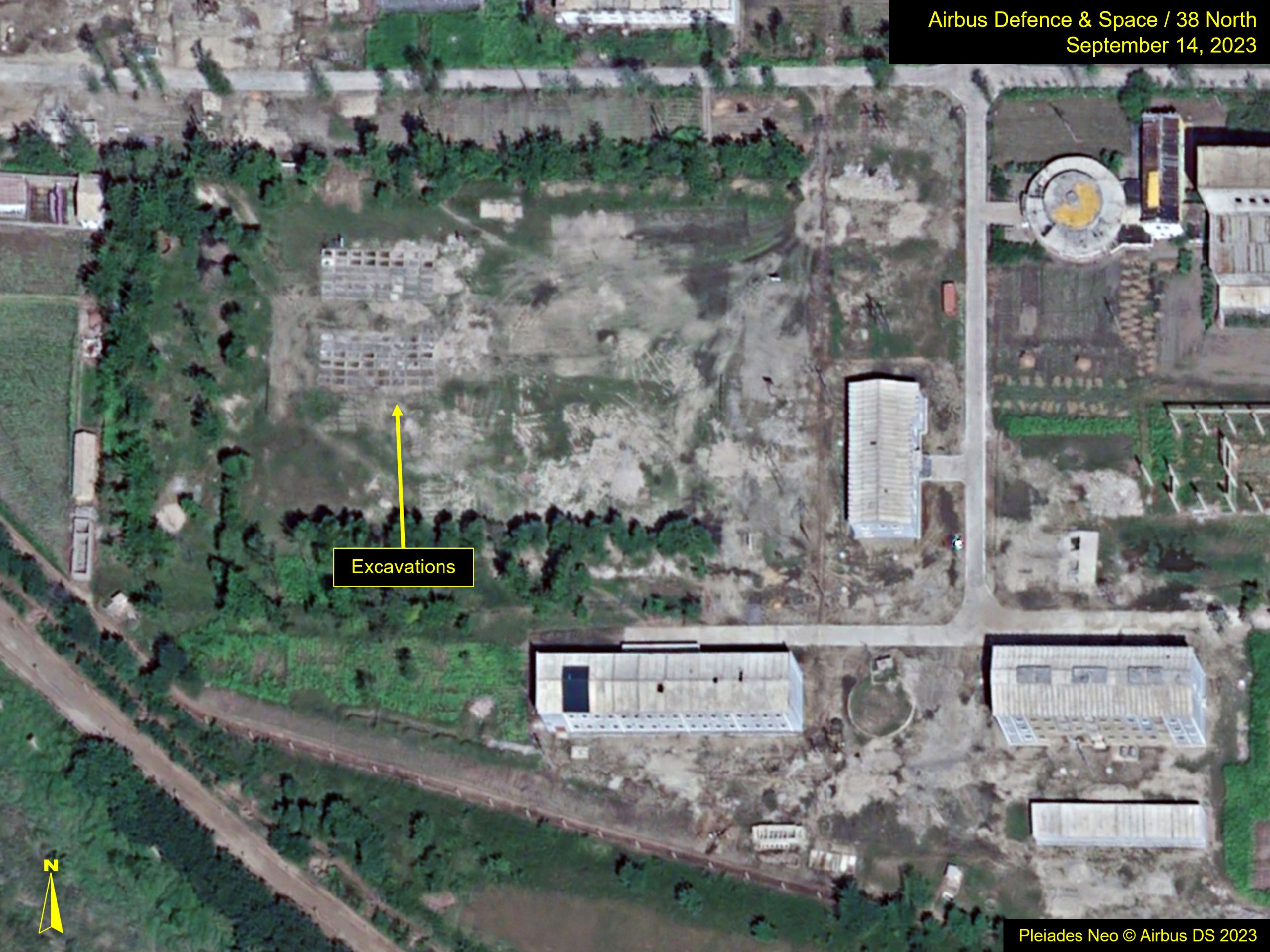
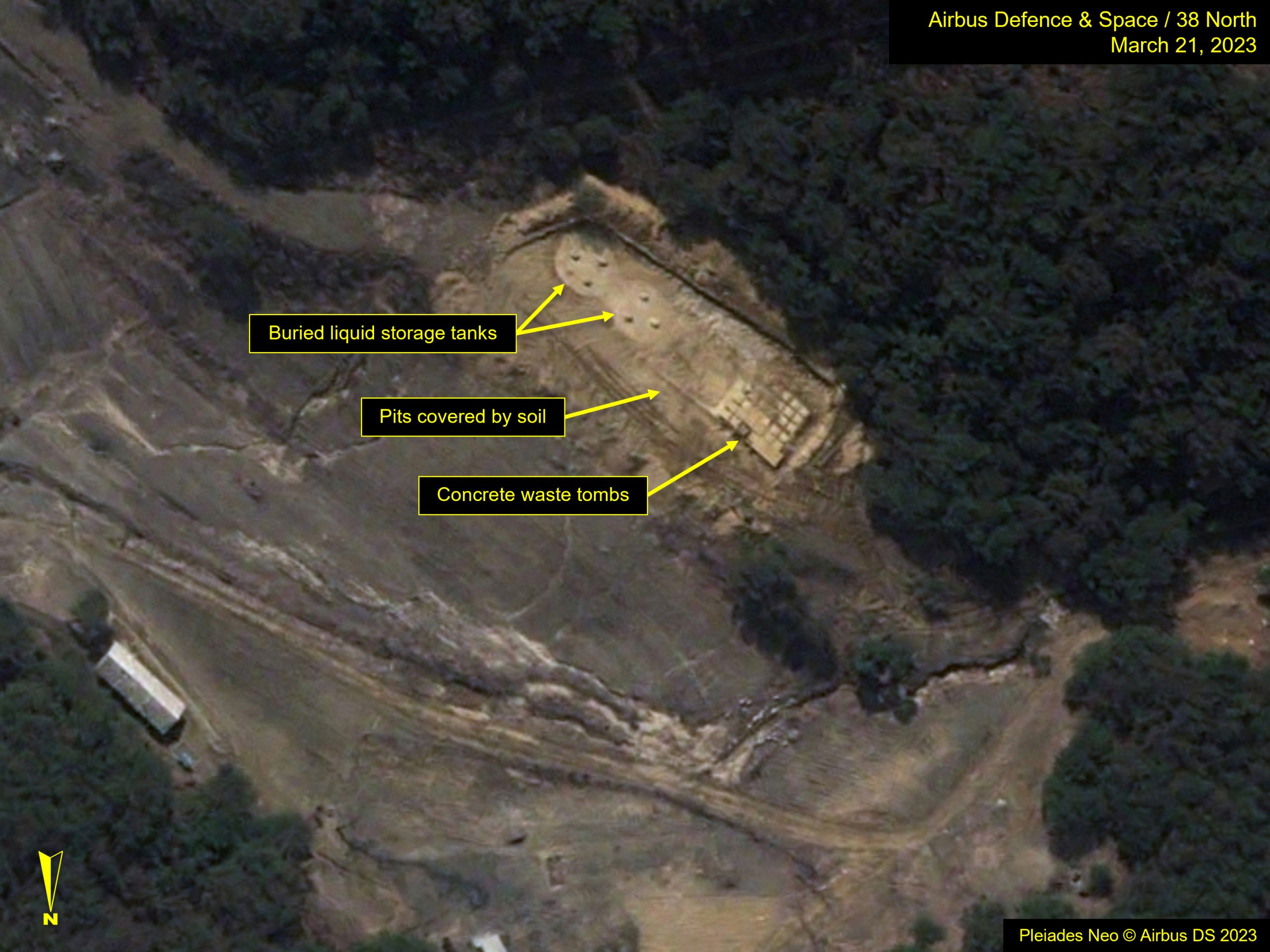
The Rail Transfer Point (RTP)
A key feature of the UEP and uranium conversion complex area is a rail transfer point located on its east side. The transfer station is serviced by a rail spur that extends south from the city railyard. While site materials can be brought in via the RTP, the primary function has been receiving chemicals—acids and other agents needed in enrichment and conversion processes. Of note has been the periodic visits of a special set of three uniquely configured flatcars fitted with cylindrical canisters. Each is distinct from the others: one has four canisters mounted crosswise to the flatcar, and two are fitted with five canisters, with one of the center canisters positioned perpendicular to the others.
The cars appear three to four times a year, a rate likely determined by production demands. They have also been seen at Manpho, suggesting the chemical plants in that city provide agents these cars bring to Yongbyon. In addition to these cars, a liquid tank car with a unique white paint scheme and a black centered access hatch is also seen here at intervals closely corresponding to the three other cars. Its content and source are unknown.
On February 15, three empty gondola railcars (bulk or ore cars) with light-colored interiors were present at the RTP. The visit of such cars is unusual, and while the cars were empty, the color of their interiors rule out coal or other dark materials.
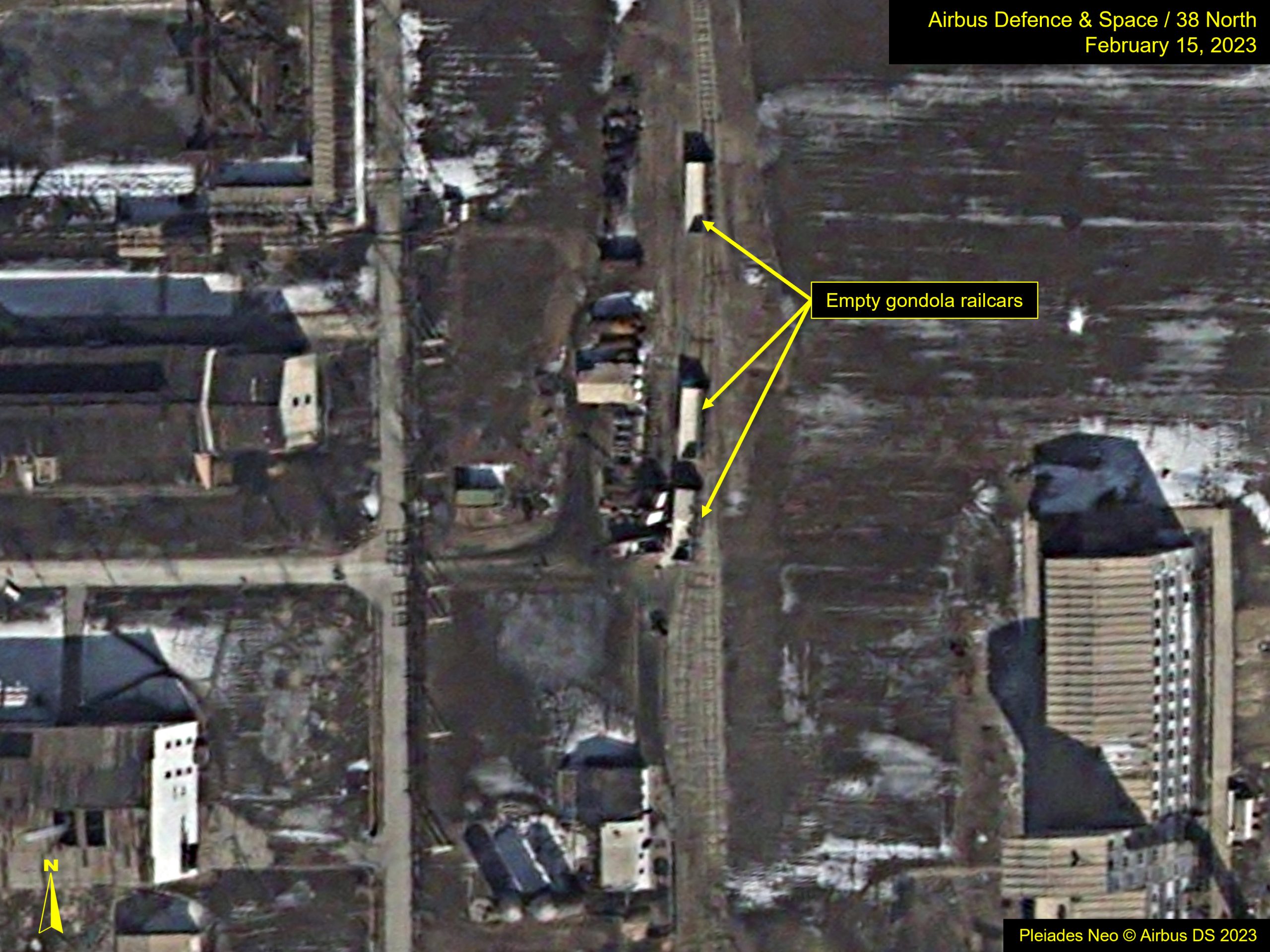
On March 6, two five-canister specialized railcars and the white tank railcar were observed at the RTP. The third specialized railcar had been decoupled from the other cars and left alone on the tracks north of the RCL. The separation of the one car from the others is a common practice. It was later moved to the RTP, joining the other cars. The three previously observed gondola railcars had departed.
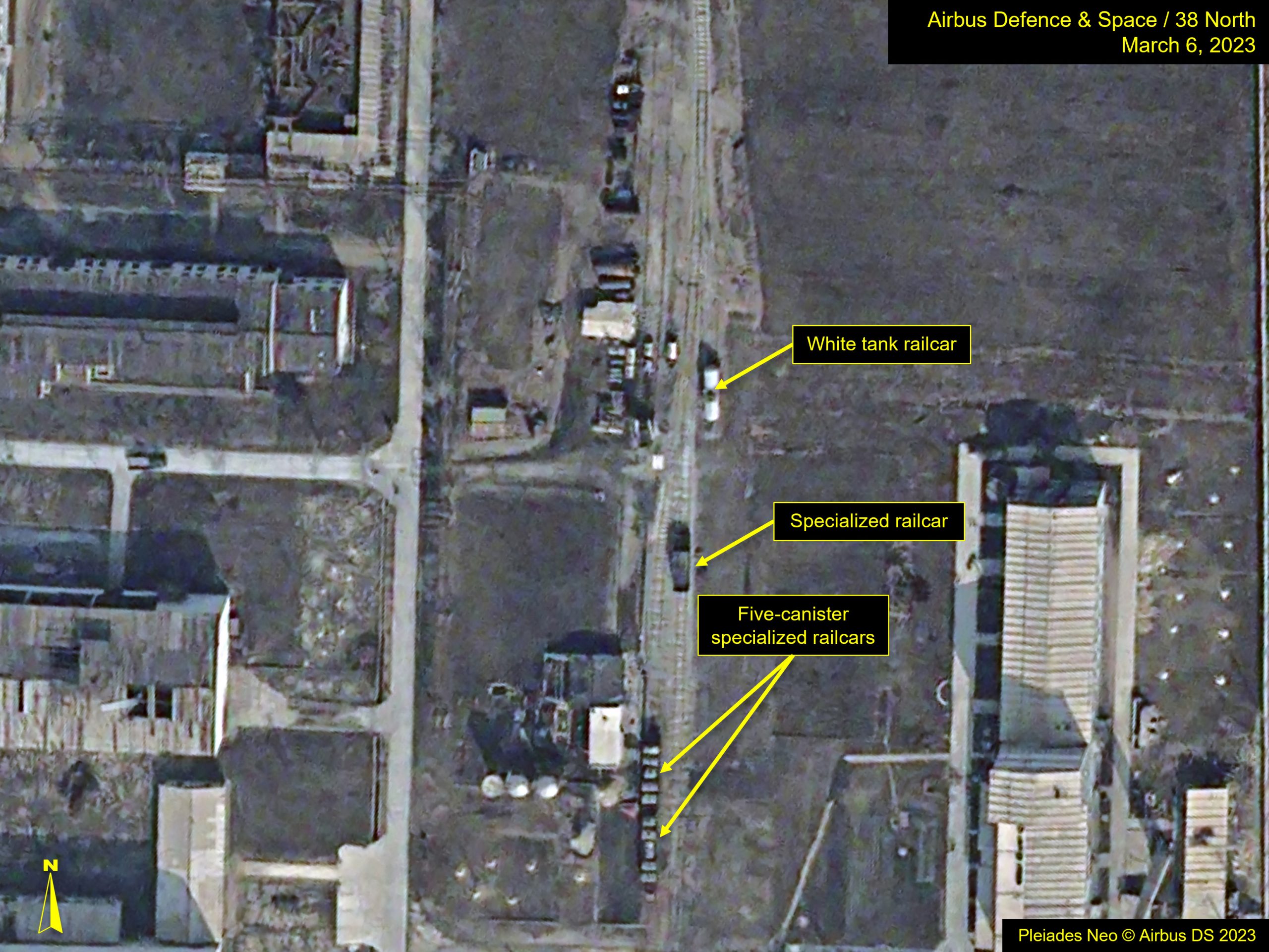
The specialized railcars are normally present for no more than two weeks. However, on March 17, one of the five-canister specialized railcars was still present, which was inconsistent with past practice.
On March 21 and again on April 20, the specialized car was still present, along with the white tank railcar. Heavy weather precluded imaging Yongbyon again until July 1. By then, all railcars had departed.
The extended stay of the railcar raises questions about whether there was a pause in certain processes during some phase of plant renovations. Regardless, imagery from August 31 shows the three specialized railcars were present once again, and by September 6, they had been moved to the city railyard, where they awaited departure.
